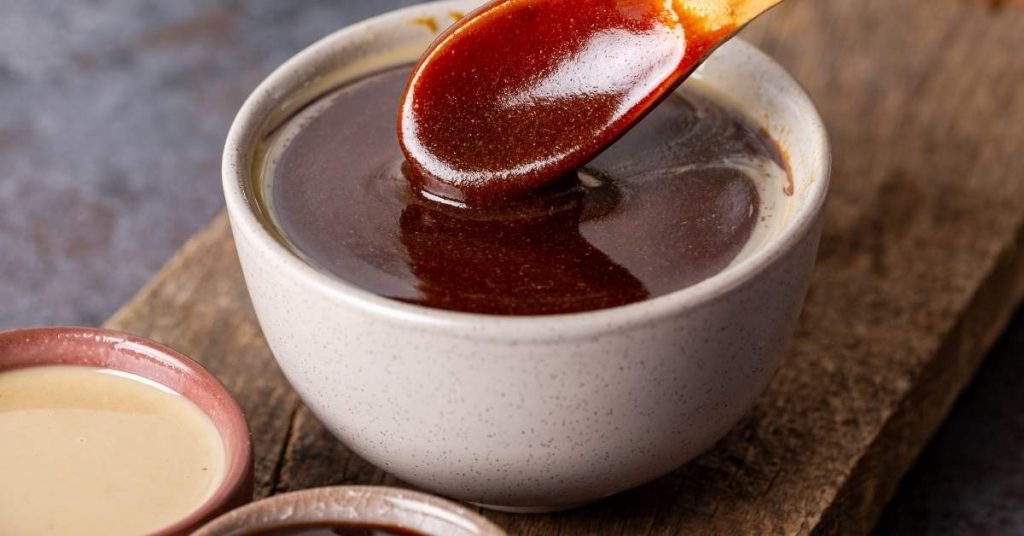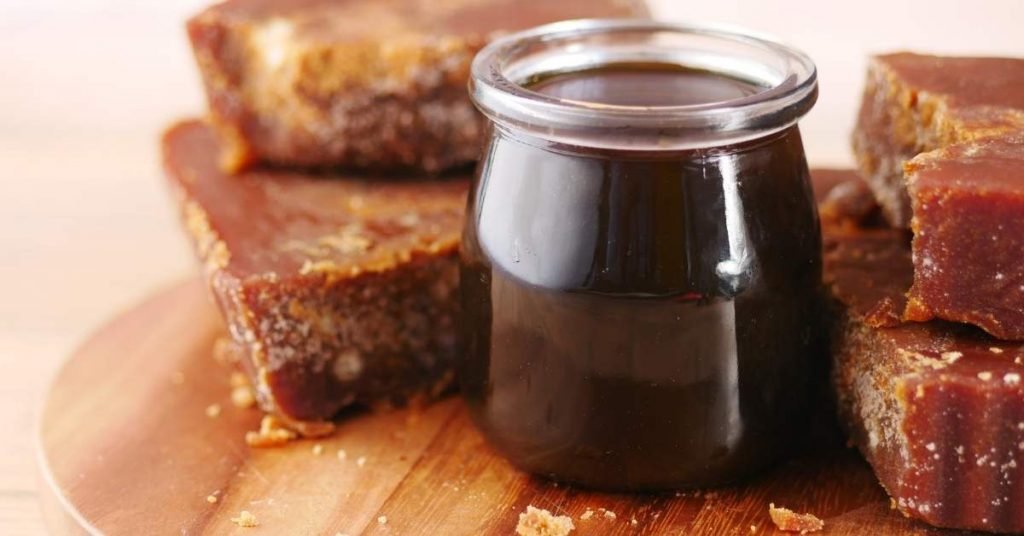The juice that flows out of crushed canes produces perhaps the sweetest liquid gold you’ll ever find! A cup of tea dances a jig with explosive tastes from a bit of jaggery. Check out this odd sweetener that’s got the tea community talking.
What Is Jaggery?
Jaggery is an unrefined sugar made from the sap of sugar cane. The finished product looks like a brown solid. The Agriculture And Processed Food Products Export Development Authority notes that most of the world’s jaggery (70%) is made and consumed in India, where it’s called “Gur” and eaten as a sweet treat or used in cooking.
Jaggery Vs. Other Similar Sugars
We discovered that jaggery is referred to or marketed by other names. Those names belong to entirely different sugars. Although those sugars are similar, they are not jaggery. Here’s why.
Jaggery (Gur): mainly produced in India
- Ultra-unrefined
- Color: gold/dark brown
- Taste: molasses, toffee
- Texture: solid
- Molasses Content: full
Muscovado: mainly produced in the Philippines and Mauritius
- Unrefined
- Color: dark brown
- Taste: wine
- Texture: sandy
- Molasses Content: moderate
Demerara: mainly produced in Guyana
- Unrefined
- Color: gold
- Taste: molasses
- Texture: crystals
- Molasses Content: light
Turbinado: produced in numerous countries
- Unrefined
- Color: light brown
- Taste: caramel
- Texture: coarse sandy
- Molasses Content: light
Panela: mainly produced in South/Latin America
- Unrefined
- Color: light or dark brown
- Taste: molasses, caramel
- Texture: solid, pylon shape
- Molasses: moderate
Brown: produced in numerous countries
- Refined – some molasses is added back in
- Color: light or dark brown
- Taste: sweet with hints of molasses
- Texture: moist, sandy
- Molasses: very light
How Is Jaggery Made?

Compared to refined sugar (that most of us are familiar with,) jaggery does not go through a centrifuge. A centrifuge is used to remove the molasses (dark brown sap) to make refined sugar, whereas the lack of this process preserves the molasses component that jaggery is known for.
Making jaggery is a time-honored practice in many cultures, especially in India. The process is similar to making peanut brittle minus the nuts with a texture like fudge.
Extraction
Sugar canes are harvested and brought to a processing house. The canes are placed into a press machine to extract the sap. The extracted sap looks like dirty water.
Filtration
The sap collected in a container gets poured through a cloth over another container to filter out residual parts of sugarcane. Lime is then added to the filtered sap.
Cooking
The filtered sap is poured into a large round pan where it heats to boiling. As the sap heats up, the impurities float to the top, where it gets skimmed off with long skimmer paddles.
Once boiling begins, the sap starts to thicken. At this point, it starts to take on the look of peanut brittle with a creamy, gold color. Workers must constantly stir and scrape the bottom of the pan to prevent the jaggery from burning.
Cooling
The workers open a valve on the large pan to release the liquid jaggery into a large, rectangle pan. Baking soda is added that causes a chemical reaction within the jaggery, inducing further thickening. Workers vigorously stir the jaggery until it reaches a fudge-like texture.
Canning
A worker uses a spatula to scrape out jaggery into a cheesecloth-lined can. It gets packed down into the can and set aside to completely cool down. Numerous cans form lines of cooling jaggery in the processing house. Once it has cooled down, it is sold along the street, or gets packaged and sent to market.
What Does Jaggery Taste Like?

Most would say this sugar tastes like molasses with subtle hints of toffee. When used in baking, cooking, or to sweeten beverages, the unadulterated taste becomes more complex as it’s married with other ingredients.
Teas that pair lovely sweetened with jaggery include black tea such as Assam. When adding it to a smoky tea like Lapsang Souchong or Hojicha, the layers of flavors become an explosive experience for the palate!
Jaggery-sweetened tea pairs with foods that contain chocolate like brownies, cakes, or other confections.
What Is Jaggery Used For?
Other countries eat small squares of jaggery as candy treats. It’s also used as a culinary sugar for baking and cooking or as a sweetener for a cup of tea. Alternative medicine such as Ayurvedic medicine relies on jaggery for medicinal reasons.
What Are The Benefits Of Jaggery?
According to Healthline, jaggery may act as an antioxidant because of its plant-based phenols. Antioxidants further help to reduce heart disease or diabetes. While jaggery is slightly healthier than refined sugar, overconsumption can lead to obesity and other health-related conditions.
Agriculture And Processed Food Products Export Development Authority (APEDA) mentions jaggery as being a medicinal sugar in Ayurvedic medicine for thousands of years. In this type of alternative medicine, jaggery benefits upper respiratory infections.
APEDA highlights mineral benefits that jaggery provides, such as calcium, phosphorus, magnesium, potassium, and iron. The presence of vitamins in this sugar includes folic acid and B-complex. The sugar may also boost energy, ward off tiredness, relax muscles, help blood pressure, act as a diuretic, and help with anemia.
The information presented on this site is provided for information purposes only. It is not meant to substitute for medical advice or diagnosis provided by your physician or other medical professionals. Do not use this information to diagnose, treat, or cure any illness or health condition. If you have or suspect that you have a medical problem, contact your physician or healthcare provider.
Why Not Try It?
Jaggery is one of the most unrefined sugars in the world. Why not splurge a little and add a little something exotic to your next cup of tea? It will certainly elevate that special time when you sit down for tea.
After all…”It’s Never Not Teatime!”
MEDICAL DISCLAIMER
Itsnevernotteatime.com cannot and does not contain medical/health advice. The medical/health information is provided for general and educational purposes only and is not a substitute for professional advice.




